From riding on camels who love ‘street-food’, chatting up with locals who have strange stories to share, spending nights in a 300 year old haveli, heavy and romantic in its own history and charm,going berserk shopping silver and jootees in the bustling walled streets of the blue city, to being carried on camel-tops into the the perfect sunset, only to find that a perfect moon-rise awaits you at the next dune, this journey into the desert town of Jodhpur was indeed a memorable one.
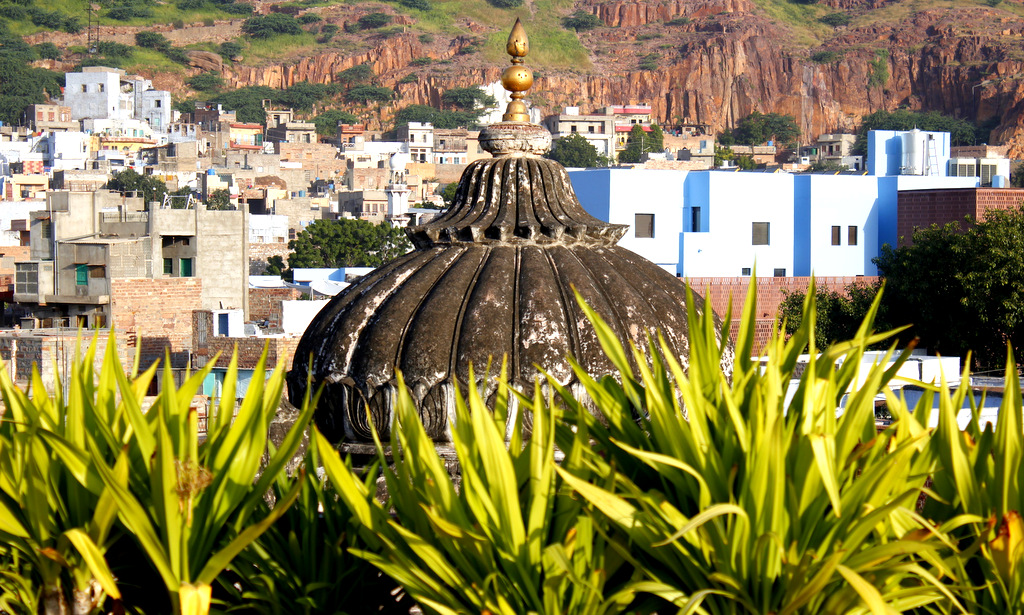
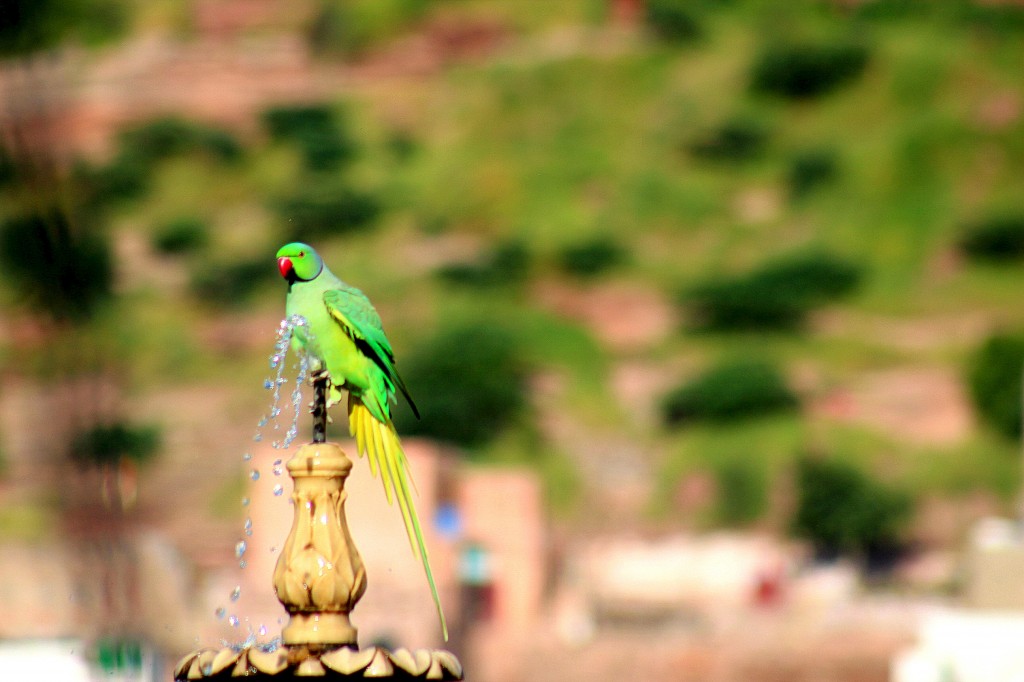
“Yeh shabd sirf Urdu aur Angreji mein uplabdh hain, khayal kiya hain aapne? Shaadi karna kyu, jab nibhana nahin hain?” ( Have you realized that this word is only available in the Urdu and English languages? Why marry, when you have no intentions of preserving the institution?) Says, Jaymal Singh. We are sitting on the terrace top of the old haveli in Jodhpur, smacking our fingers off the sumptuous Rajasthani fare. All around us are speckled jewels, shimmering vistas, the landscape disturbed pleasantly by the imposing Mehrangarh Fort.
The rock on which it stands, or has stood for several thousand years, apexes to the right joining the silver white shimmery of the Jawant Thada. To our left is the glittering outlined silhouette of the Umaid Bhavan Palace. In uneven spurts of time, crackles bouquets of fireworks: the Palace is hosting a VIP wedding.
And these upscale celebrity weddings, is something Jaymal Singh isn’t approving enough of! After all, how long do they last? He seems disappointed with the Liz-Arun wedding of 2007(who aren’t a couple anymore!). Each wedding more magnificent and resplendent than the other, and their longevity lasting in inverse proportions to the expenditure. Food for thought,I would say. Its amazing, what thought provoking conversations one can end up in, if you are just a little curious.

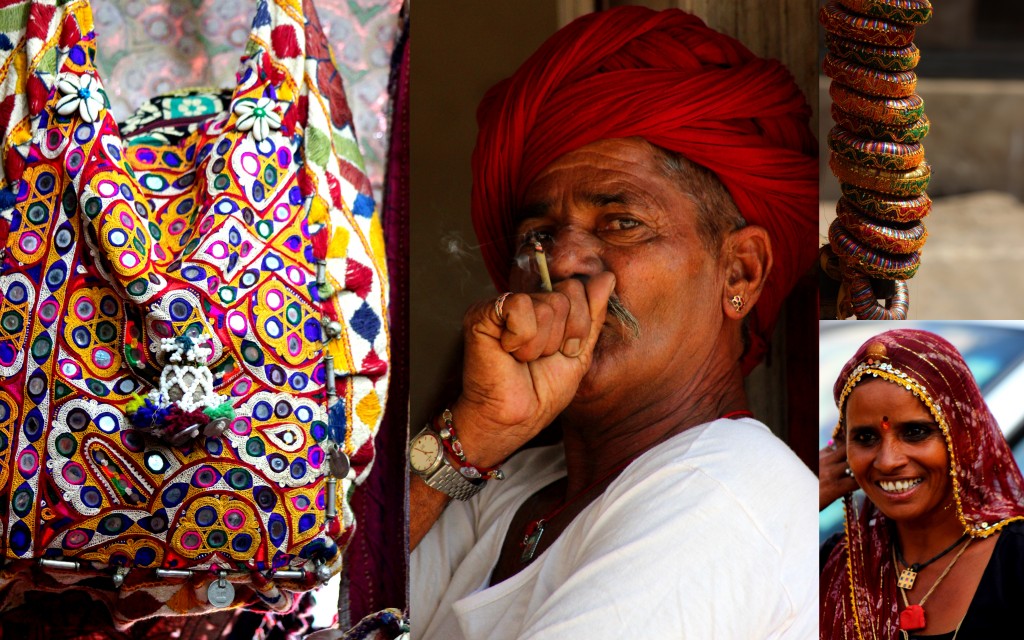
The haveli is 300 years old, and was a gift from the Maharaja to the land-owner in whose name the building still stands. The break of daylight and the dominating desert sun seeping through the curtains woke me up early the next morning. I felt almost living a part of their lives, the moment I stepped into the courtyard.
Stained colourful glass facades, intricate sandstone carved window sills, and black and white photographs telling tales of the glorious days of the past. A quick unpretentious breakfast, while watching pigeons and parrots playfully splutter water from the terrace fountain, and a short twenty minutes through the uphill roads took us to the Mehrangarh Fort. Mehrangarh Fort stands a hundred feet in splendour on a perpendicular cliff, four hundred feet above the sky line of Jodhpur.
Burnished red sand stone, imposing, invincible and yet with a strange haunting beauty that beckons . And true to its name, it stands like a Citadel of the Sun, and noted as one of the best forts of Rajasthan.
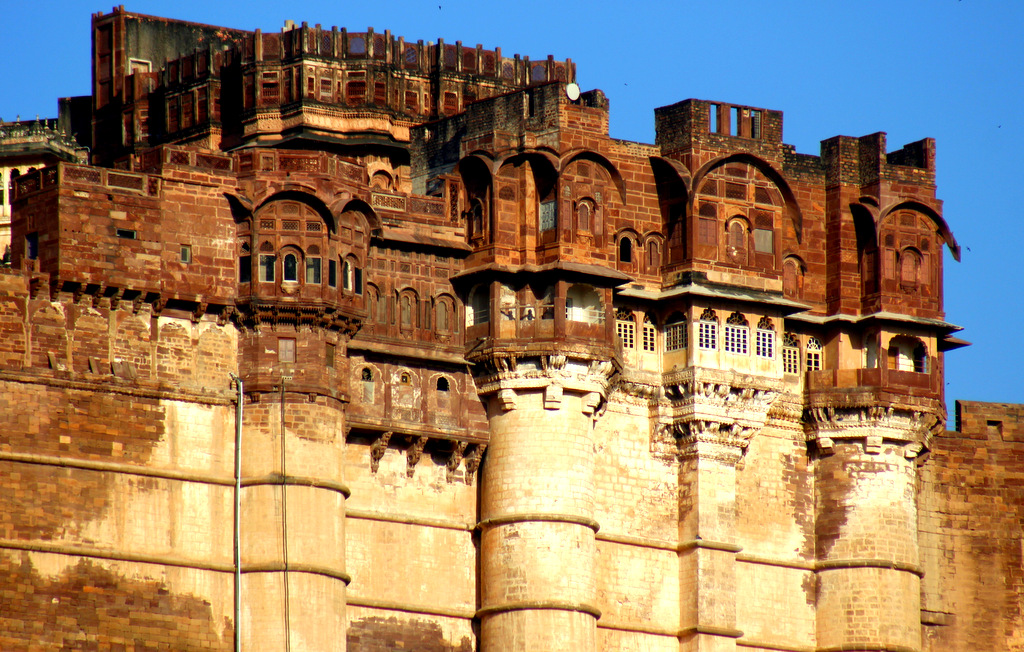

And below it, nested the indigo washed neighbourhood of old Jodhpur. A little bird containing a history cheat-sheet had made sure I knew that the blue in the times of yore denoted a classification of Brahmins versus the non-Brahmins.
The name of the brave rebel is probably not known yet, but someone did manage stepping out of his non-Brahmin courtyard to decide that even his house should be blue-washed with indigo. And what followed thereafter has left us spectators an indigenous sight. A carpet below the magnificent fort painted in blue. Pretty and blue.
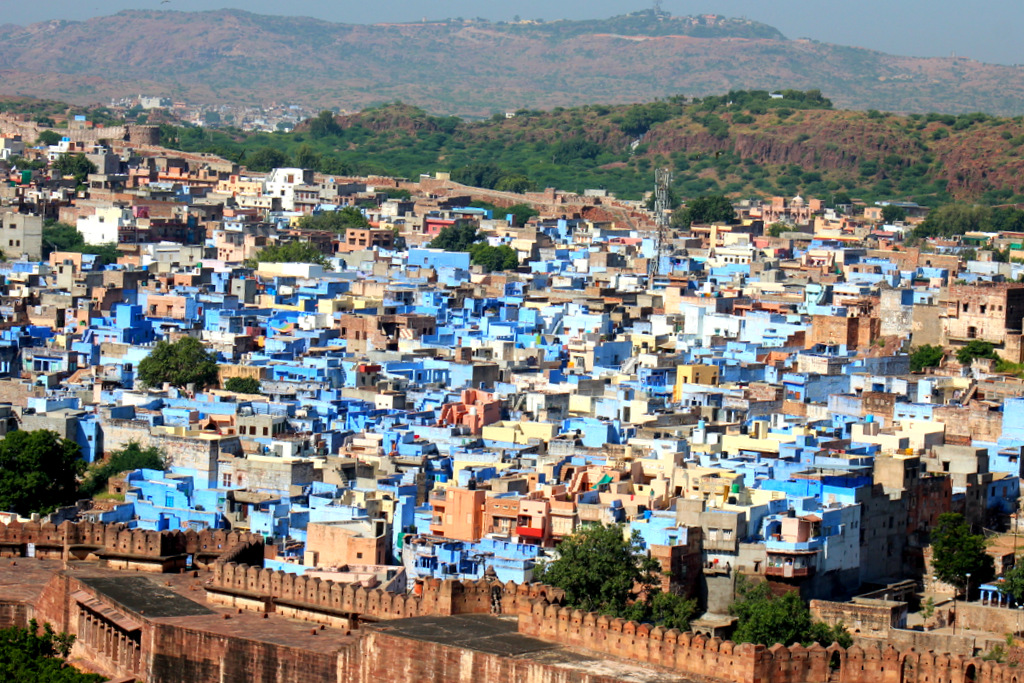
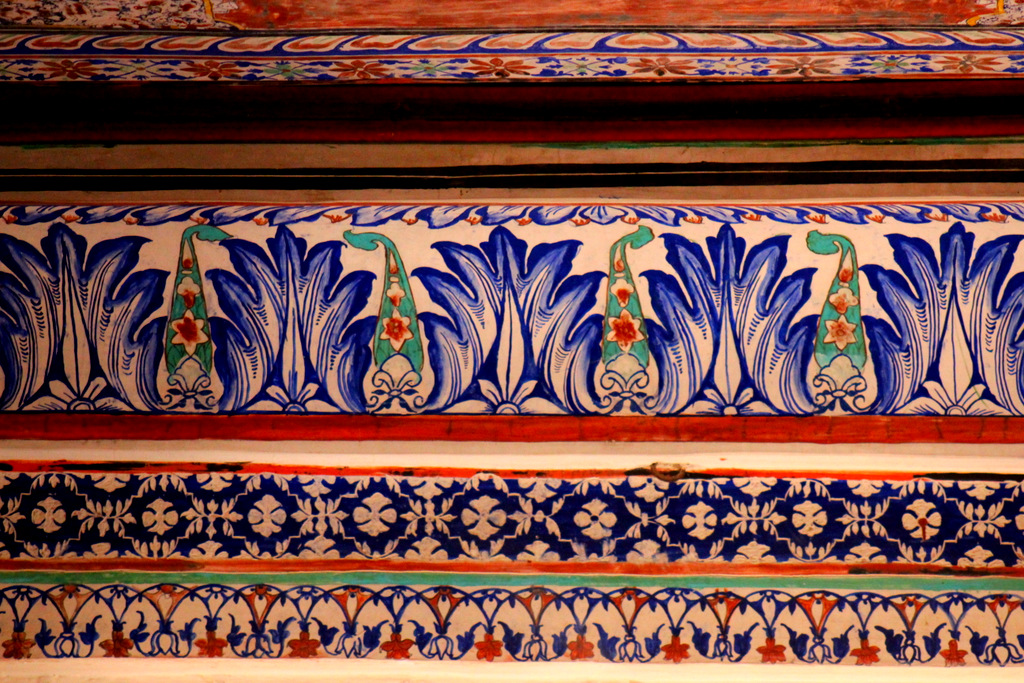
As the sun lowered its aggression and felt a little more benevolent, we headed off to the little village of Ossian, to witness the sunset. And what a spectacle it was. The predictable orange gold ball of fire, smoothly dropped from behind the tree, while we rocked and swung atop our camels. And as if the divine was not satisfied with providing us meager mortals this privilege of such a beautiful landscape, the next moment made us drop our jaws in awe.
As the dirt road took a curvaceous turn, right in front of us rose a magnificent ball of white and cream; the moon-rise, within a split second of the sun drowning below the horizon. The whole ambiance, the serenity of the dry forest, the sound of the lonely cricket, the distant silhouette of dunes ahead of us.. and this mesmerizing landscape will be an image I can never forget.
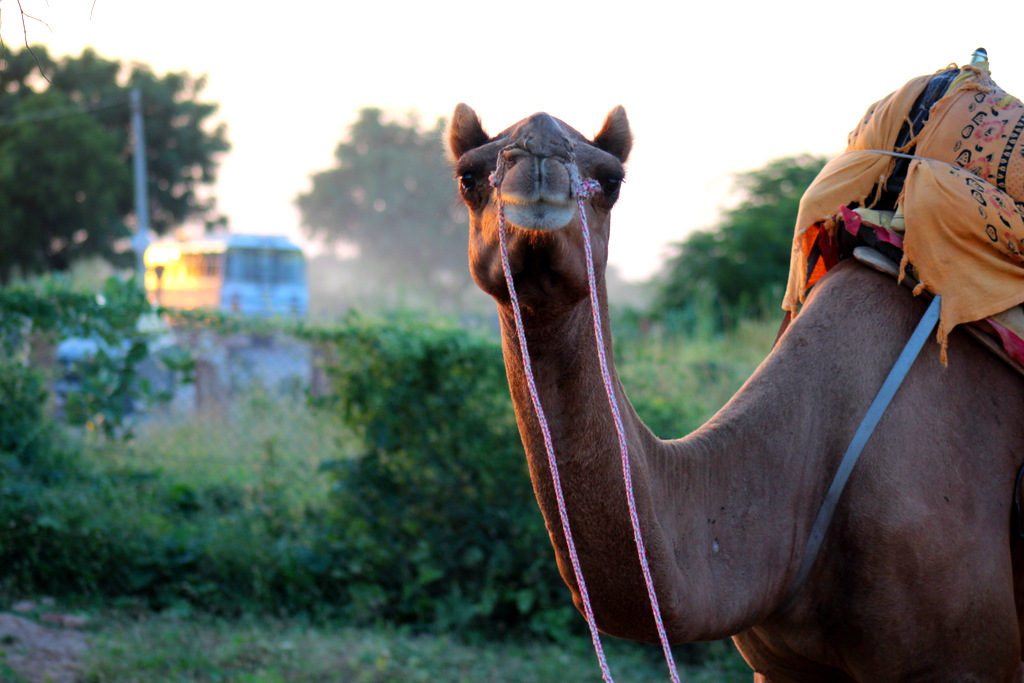

Some things got missed in this trip-which leaves me with a smile on my face and makes me promise to myself that I need to go back. I need to see the blue city, coming alive with the long slant rays of the setting sun. I need to see the walls of the fort turn from brown to gold when the shadows grow longer. I need to get lost in the alleys and bylanes within this blue carpet. I need to meet more Jaymal Singhs to hear their stories, while I can share a home-made Makhaniya Lassi or munch on a Mirchi Bhaji, sitting on a charpoy, right in front of their own courtyards, down in the blue village. Sinful, that I didn’t give Jodhpur enough time or a fair chance..
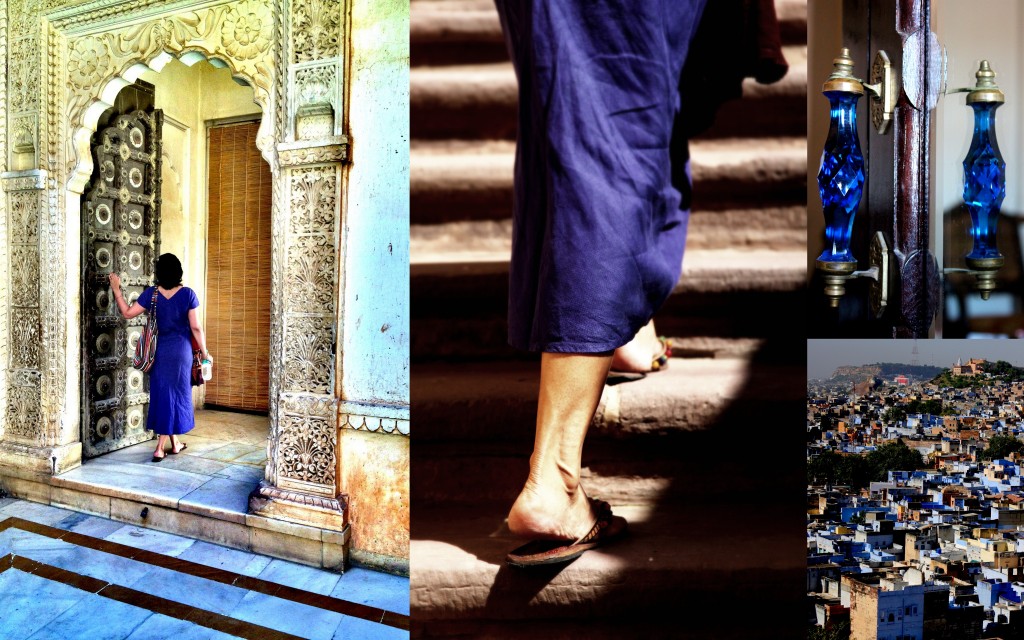
Till I see you again, Khamma Ghani Sa (Pardon my misgivings, Milord!)

Sambrita Basu is a food-fascinated travel writer and photographer based out of Bangalore India. A background and a degree in hospitality and restaurant management paved her interest in food. As the secretary of the institution’s editorial club, she contributed regularly and wrote about food in their annual magazine, A la Carte.
Sambrita has published interviews of celebrity authors and business veterans in international publications like Infineon. Her contributions also include photographs on foods and restaurants of Bangalore for DNA—a leading newspaper publication in Bangalore. Sambrita’s creative expressions transport readers to alleys, hotels, hide-outs, restaurants, attics, and spice markets in several cities across the world.
Sam (as she is popularly known by her friends and family) doesn’t write for a living, but she lives to write.








